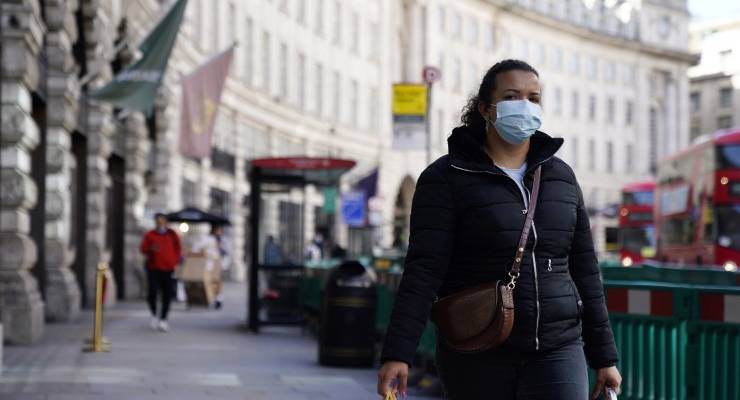
Australia could be heading toward a COVID-normal summer. Victoria’s lockdown is easing with the second wave reigned in, state borders are set to reopen, and the first Kiwi travellers are here.
But overseas, the picture is far less rosy. Global cases of coronavirus rose by a daily record of 400,000 on Saturday, a reminder of how the pandemic continues to cause havoc. Restrictions are returning across Europe, where cases are surging. And despite optimism about the prospects of a vaccine, ongoing restrictions to everyday life could continue well into next year.
Western failure?
Europe is paying the price for a hasty summer reopening, with case numbers threatening to spiral out of control. Italy, which came to symbolise the sheer terror and devastation of the first wave recorded over 10,000 new cases last week, its highest total ever. In the United Kingdom, daily numbers are closing in on 20,000.
But the virus is also hammering countries that withstood the first wave. The Czech Republic, praised for its quick early response in Spring now has the highest infection rate in Europe. Poland, after recording nearly 10,000 cases on Saturday, is building field hospitals and closing down schools. It’s gotten so bad that Sweden, the darling of every libertarian for its no lockdown approach to the pandemic, is now introducing tight restrictions.
Across the continent, where lockdowns are politically unpalatable, and there’s plenty of division over what to keep open, there’s a reluctance to go the Victorian route. Instead, countries have introduced a patchwork of sometimes confusing restrictions aimed to preserve some semblance of normality while keeping hospitals from getting swarmed.
In France, Emmanuel Macron has put Paris and other cities under a 9pm curfew, but in spite of recording over 20,000 new daily cases five times in the last week, people can still travel, use public transport and go to restaurants. The UK has a highly confusing “three-tier” system, where the level of restriction depends on regional case numbers. Wales just introduced a two-week “fire-break” lockdown to ease pressure on swamped critical care systems.
Elsewhere, some of the worst-affected countries continue to struggle. The United States recorded over 70,000 daily cases last Thursday, its highest total in three months — potentially bad news for Donald Trump’s re-election chances. Iran, the worst-hit country in the Middle East, is entering an apparent third wave.
But some parts of the world are seeing success stories. Like Taiwan, where daily cases have been in the single digits since April. Vietnam, which stopped a potential second outbreak in July. Sub-Saharan Africa, meanwhile, was meant to be a ticking time bomb — instead, the continent’s success has baffled Western experts, with countries like Senegal, Rwanda and Ghana particular standouts.
What’s news on the vaccine front?
Donald Trump desperately wants a vaccine by election day. Things might not be so simple. Pfizer, which is producing one of the leading candidate vaccines recently announced it won’t be ready till after the November 3 vote. Last week, Johnson and Johnson paused clinical trials after a participant got sick.
On the other hand, the British government says the Oxford AstraZeneca vaccine could be rolled out after Christmas. The World Health Organization says globally, vaccines probably won’t be widely available until at least mid next year. The US’ leading virus expert Anthony Fauci says widespread distribution might not come till April next year. Even if a vaccine is developed, of course, ensuring access will pose a big logistical challenge.
What if the virus mutates?
Could the virus mutate and become more deadly or harder to vaccinate against? University of New South Wales virologist William Rawlinson says mutation is something scientists are keeping track of, but isn’t a cause for concern so far.
“It’s important to remember that mutation is a normal part of virus life,” Rawlinson told Crikey.
The novel coronavirus is made up of around 30,000 nucleotides, or letters in its genome. When the virus copies itself, some of those letters change, causing a mutation. While the virus has been mutating slowly, scientists have still tracked down around 12,000 mutations.
But what matters isn’t how many mutations, but where in the virus they occur, Rawlinson says.
“What we need to do is track it and look at things that could be problematic from a diagnostic or therapeutic point of view.”
The good news is that the virus has so far mutated as expected. Mutations haven’t made it deadlier, or created problems for potential vaccination targets.








Second wave “reined in”, not “reigned in”. Editing, please.
This one is frequently wrong, in Crikey and elsewhere. It’s not that difficult, surely?
Soon it will be “rained in” and most people won’t even notice.
Subtlety and nuance are fading from language when debased public discourse most needs them.
The pitter patter of little virus!
Was just about to point that out! People get this wrong so often nowadays.
Tks Crikey, grim reading so for light relief I’m now looking forward to Adam Shwabs rebuttal – unless he’s too devastated by Sweden’s reported tightening of restrictions to comment any further.
This assumes that Schwab is amenable to fact & reason which, to date, he has not demonstrated.
Seems like a marketing opportunity for Scotty (from marketing) the BCA, QANTAS, the Tourist mob, and all the other $$$ fixated opportunists.
everyone in those affected areas must be dying (oops I meant yearning) to come here to Australia and get away from the plague bug.
What an opportunity to make $billions. It would flow right through the economy, even funeral providers would get some of the action.
Go! Scotty Go!